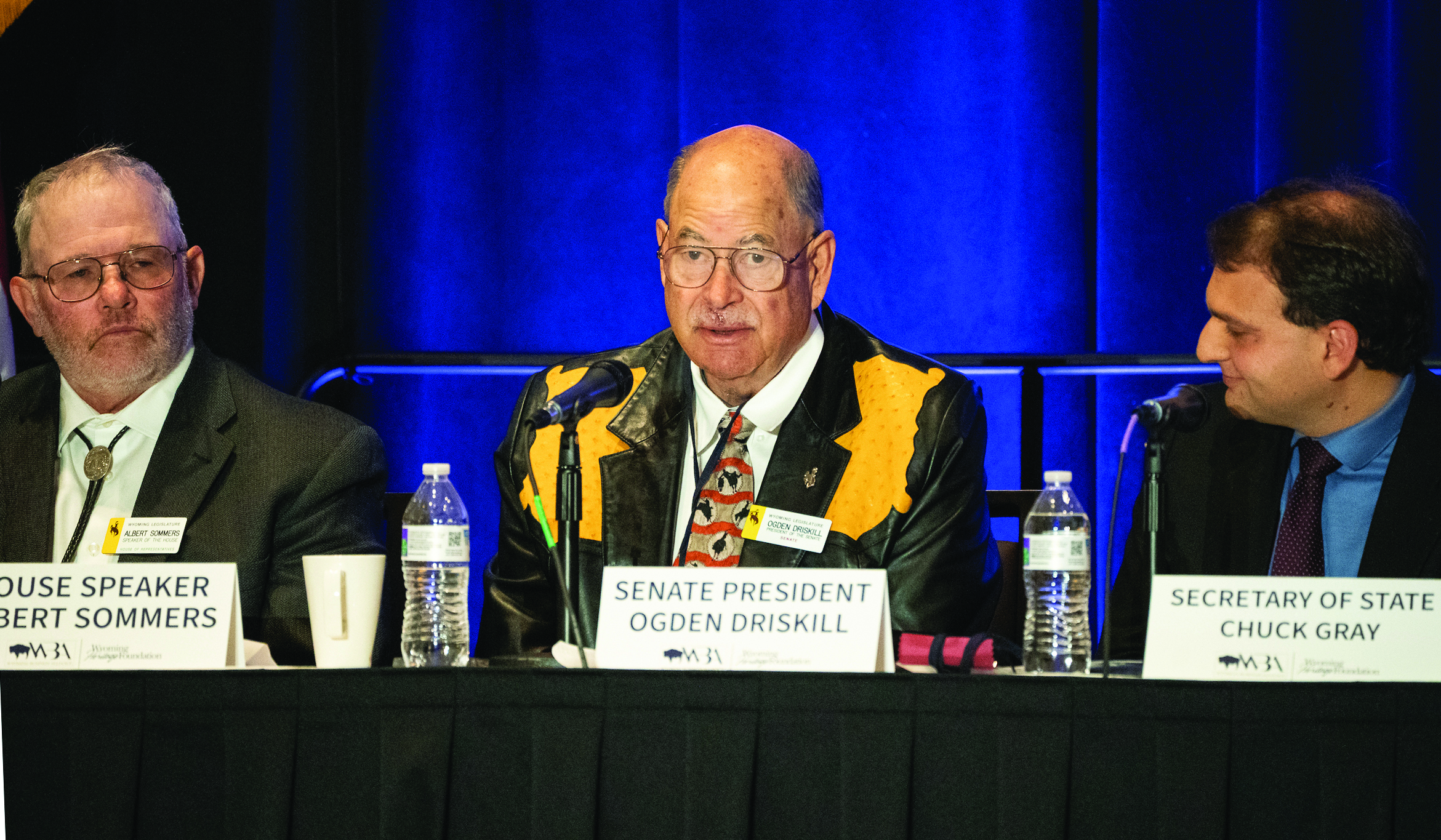AARP Hearing Center

Lawmakers Not Sure The Fix, But Considering Options
Affordable housing and available housing took center stage on Nov. 15 at the Governor’s Business Forum in Laramie as a panel made up of four of Wyoming’s statewide elected officials, as well as the Speaker of the House and Senate President discussed Wyoming’s Economic Forecast, released by the University of Wyoming and Dr. Anne Alexander.
Senate President Ogden Driskell mused that housing could be the biggest issue considered during the 2024 Legislative Session and told the story of his own daughter staying in Oregon for three years while looking for an affordable place to live in Wyoming.
Under the heading of “Summary of Wyoming Outlook for 2024 and Analysis of Barriers to Growth,” Dr. Alexander seized on the fact Wyoming’s available housing stock and affordability will persist into 2024. More specifically, Alexander wrote, “Housing supply, housing prices, and mortgage rates will continue to be a headwind to the economy…. The hurdles to home ownership and affordable rentals represent a broader challenge to US growth as the workforce necessary for new and expanding businesses struggles to find a supply of affordable housing.”
Alexander went on to mention rental vacancy rates in Wyoming since 2022 have ranged between 7-9% and that the rental market in Wyoming is likely to get tighter. Homebuyers had it no better with the average closing price of real estate in Casper (as one marker) rising nearly 13% from 2021-23.
“What resonated with me is what I hear in Western Wyoming is a shortage of workforce housing,” Wyoming Speaker of the House Albert Sommers tells AARP Wyoming. “It is tough to build a hospital, tough to hire teachers if you don’t have any housing. If you want to grow your economy or have any middle-class jobs in your area, you have to have housing.”
In addition to workforce housing, AARP Wyoming has listened to state conversations around the lack of available housing for the past two years. Members have told AARP it is tough to downsize after children leave the home or after working years are past.
While there were no firm solutions for what to do about the housing crisis, there are a lot of discussions going on. A bill to start a Housing Trust last year failed after a close vote. Sommers says he believes a Task Force is needed to dig deeper into the issue.

“There have to be public-private partnerships and those partnerships can be uncomfortable for Wyoming sometimes,” Sommers says. “We are free enterprise, free market people, but we may need to talk about how the government might need to get involved if the free market isn’t able to address the issue.”
Sommers also mentioned the work being done by the Regulatory Reduction Task Force, which is seeking solutions around housing rules and policy in the state. The Task Force met in November and brought forth a few different ideas.
One of the bills supported by the Task Force last month would encourage Accessory Dwelling Units (ADU). These dwellings, an AARP-favored solution, are smaller houses that can be built on an existing property, previously known as a mother-in-law apartment. The Legislature’s Regulatory Reduction Task Force recommended a bill for sponsorship that would require a city or town to issue a permit for an ADU no less than 90 days after receiving an application, assuming the lot size is not more than 7,500 feet, building coverage is no more than 40% of the lot, and the unit does not exceed more than 75% of the gross floor area of the single-family dwelling already on the lot.
Senator Bob Ide and Representative Bob Davis both struggled with the idea that the state would tell local municipalities how to run their land use plans. Cody Mayor and President of the Wyoming Association of Municipalities, Matt Hall, pointed out that Article 13 of the Wyoming Constitution points out cities and towns are empowered to determine their local affairs.” Mike Gierau, State Senator from Jackson, framed the discussion a little differently.
“Overall, I agree with the sentiment of local control, but having been said, we have a statewide issue here; we are lacking housing across the state for different reasons in different areas around the state,” he says. “This is an attempt to address that and say, we’ve got a problem that is not being addressed.
“I think we move a bill forward if for nothing else than to spur discussion in city halls and county commissions around the state that if we (county commissions and city councils) don’t take a good hard look at this, maybe the state will go forward with something.”
Not everyone at the meeting of the Regulatory Reduction Task Force was as pleased with the bill. The Wyoming Association of Municipalities, The Wyoming Association of Planners, and Park County all commented against the proposal, citing concerns that these applications and the truncated permitting time may result in more staff time, as well as opportunities for short-term rentals, such as Air B&B’s. They believe more ADUs may not address the housing concern for Wyoming residents.
“The thought of any permit being ‘automatic’ where health, safety, and welfare are to be considered is simply frightening. It’s reasonable that local government entities should have clear processes, timely responses, reasonable fees, and clear communication with applicants, but there are too many variables that can hold up the processing of a permit, which comes out of the control of staff,” wrote Joy Hill of Park County’s Planning and Zoning Department.
Ultimately, the bill was moved to be forwarded to a committee at the discretion of the chairmen of that committee for sponsorship.































































